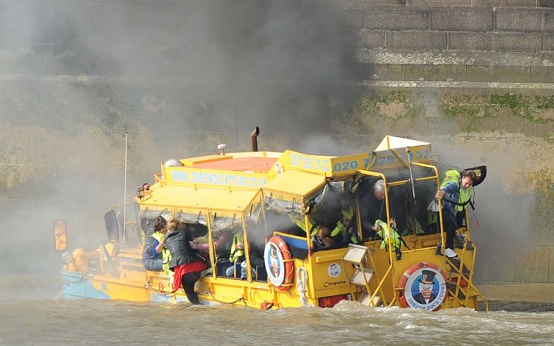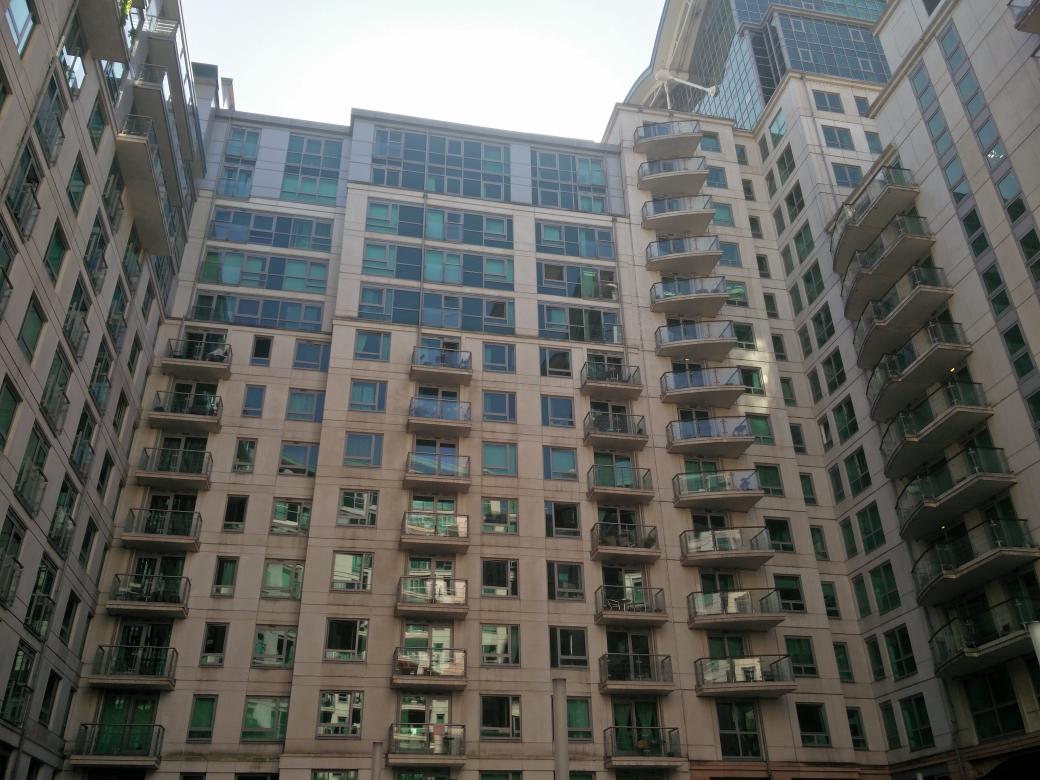Red Metropolis and Alpha City
Red Metropolis by Owen Hatherley
Alpha City: How London was captured by the Super-Rich, by Rowland Atkinson
If you head to the south bank of the river Thames, you’ll find many products of their time. Let’s take a walk along it in our minds, starting from Tower Bridge and heading upriver. What will we find?
First up, City Hall, home to the newly elected Mayor Sadiq Khan. The building has aged as badly as the other Norman Foster bulbs, and its fading sheen is a convenient metaphor for the mayoralty’s limited powers and relevance, particularly as those it has enjoyed are tied up in what Hatherley describes as a Faustian pact with rampant property speculation.
Appropriately, then, it is part of the “More London” development of crap office blocks and chain restaurants, and is owned by the Kuwaiti sovereign wealth fund. Exorbitant rents are forcing the Greater London Authority out east, to Royal Docks in Newham. Neighbouring PricewaterhouseCoopers will probably be able to afford to stay.
Best not to linger here: private security might tell you off for taking a photo. Let’s head west, past a few more monuments. The first is the gargantuan Bankside Power Station, now home to Tate Modern. This, and the redeveloped Globe nearby, are symbols of the Blairite optimism years: the city as a regenerated place of art and culture, but increasingly unaffordable housing and insecure employment.
I can’t be too cynical about a public art palace, but I can be cynical about the fossil fuel burning mega-corporations who sponsor it.
Talking of public art palaces, my spirits lift as I approach the Southbank Centre, even though this walk is purely imaginary. The Royal Festival Hall, built as part of the 1951 Festival of Great Britain, represents post-war optimism and culture for the masses - if they ever reopen - and one of the last truly democratic spaces in central London. They tried to get rid of the skateboarders in order to open a few more chain restaurants: the skateboarders resisted.
Head under Hungerford Bridge, and we find County Hall, City Hall’s imposing Edwardian predecessor as London’s administrative heart.
Hatherley’s book, written in the aftermath of Labour’s chastening defeat at the 2019 general election, sifts through the generations of lefties who ran London here, from the LCC’s firebrand marxists to Ken Livingstone’s Thatcher-infuriating gatherings of Rastas and Bangladeshi pensioners. As James Butler writes in the LRB:
It contained seven miles of corridors, 28 restaurants and even a Masonic temple – which Ken Livingstone rapidly gave over to his women’s unit when he took over the leadership of the GLC in 1981.
No wonder the Tories wanted it gone.
The building’s fate is a cruel one: it now houses an aquarium, an amusement arcade, and an interactive adventure based around the noughties animated star Shrek.
Let’s keep walking, beyond Westminster Bridge and forced inland to avoid MI6 headquarters and - more important to society - the duck boat. Unfortunately, that peculiar tourist attraction caught fire mid-stream one sunny day in 2013, and its slipway has since been lost to redevelopment.
We come to St George’s Wharf, which is one of the non-places written about in Alpha City. The book is quite repetitive, and relentless; but perhaps that’s the point.
From One Hyde Park’s bomb-proof windows and connecting tunnel to a five star hotel, to the hollowed-out basements of Mayfair, Atkinson diligently outlines the physical transformation of the city to suit the whims and preoccupations of the international super wealthy, and the armies of lackeys, agents, and facilitators who do the paperwork, smooth the transactions, and arrange for the collection of crashed and abandoned Italian sports cars.
Of St George's Wharf, he writes:
“It may seem a little cruel that this was twice winner of the Architects’ Journal worst building in the world award. The aesthetics of this section of the city has been increasingly shaped by the requirements of capital flowing into it; it is more a place to invest and grow cash than one in which to live...
“The result is an uncanny space pregnant with a sense of social absence, an ultra flightpath estate for the alpha folk leading the vanguard of a property-led urbanism.”
We had better stop here, because next is Nine Elms, and if anything that's even worse.
LTNs are here to stay
A couple of weeks ago, I wrote:
I’m not confident that “more rat-running” is quite the vote winner a purportedly progressive party thinks it is, but we’ll see how the anti-LTN candidates do at the impending London Mayoral Elections.
The answer, I'm happy to say, is extremely poorly. This thread outlines how the anti-LTN campaign in Wandsworth went down like an idling Audi with locals, and fringe mayoral candidates who attracted disturbing amounts of media attention, like the extreme right ex-husband of Billie Piper, failed to get more than 1% of the vote for their anti-cycling, pro-conspiracy theory manifestos.
The Gardens Between
I'm going to write about cities in video games for a future newsletter. As a taster, I have been greatly enjoying The Gardens Between, a gentle, anxiety-reducing, and beautifully realised puzzler.
Sheds float, clothes airers become constellations, and a humble urban yard becomes a place of friendship, discovery and imagination. Please play it if you can.





